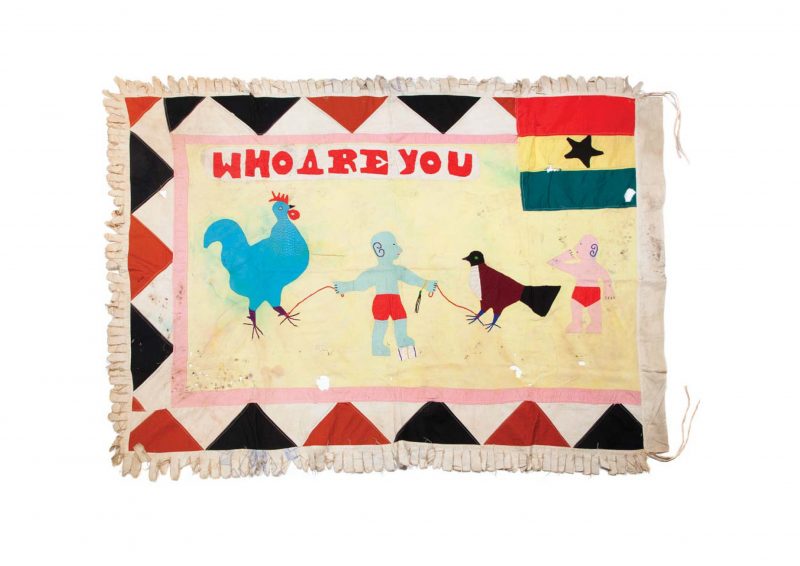I have visited the Ghanaian Fante Asafo flags at the Detroit Institute of Arts dozens of times. In their exquisite handwork and loaded symbolism, the flags strike a perfect balance between art and craft. But I have often wondered, What is the provenance of this form, inevitably labeled “folk art” in displays or auction catalogs? I spoke with Dr. Nii Quarcoopome, native of the Ghanaian capital of Accra, and the co–chief curator and head of the Department of Africa, Oceania and Indigenous Americas at the Detroit Institute of Arts, as well as the curator of African art at the NelsonAtkins Museum of Art, in Kansas City, Missouri. He holds a doctorate in art history from UCLA and has studied African art in the field since 1986.
—Sarah Rose Sharp
Fante Asafo flags

THE BELIEVER: I understand that the Asafo tradition involves a complex social practice that goes hand in hand with this visual-art practice of making flags and banners. Can you outline the historical and present-day role of Asafo groups for the Fante people?
DR. NII QUARCOOPOME: “Asafo” comes from the Fante term asa (“war”) and –fo (“people”). So it immediately conveys the original military history of the Asafo companies, which were formed to protect communities. You can have up to seven companies in a given town, depending on the size. As you go into the bigger towns that have now become regional capital cities, you find multiple Asafo groups with well-established traditions, membership, and inter-company rivalries. People determine their affiliation with a particular Asafo group based on their father’s membership, so if your father was a member of Asafo group number 1, both [his] sons and daughters will aspire to be members of that Asafo group.
BLVR: So they’re almost like college fraternities or something?
NQ: That’s right. When you become a member of an Asafo group, you are going to be interacting with people from all sections of society. People who enter the Asafo do not become leaders based on their station in life, so even if you come from the royal family, within the context of your Asafo you might end up working under a leader from a lower-class background. An Asafo organization is therefore one of the most democratic forms of association among the Fante people, a critical equalizer.
BLVR: Can you speak to the specific role that the flags and banners play within this culture? What aspects of identity are tied up in the creation of these flags?
NQ: Nobody knows exactly how the Asafo groups came about, whether there was a preexisting military organization based on these companies before the Europeans arrived. What we do know is that they call themselves...
You have reached your article limit
Sign up for a digital subscription and continue reading all new issues, plus our entire archives, for just $1.50/month.
Already a subscriber? Sign in




